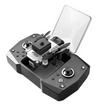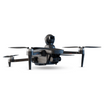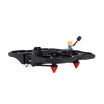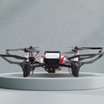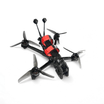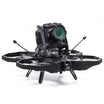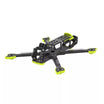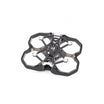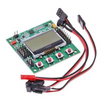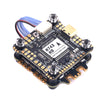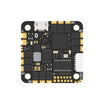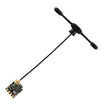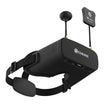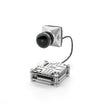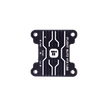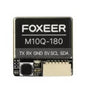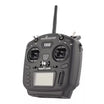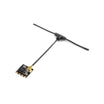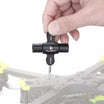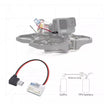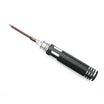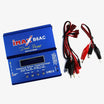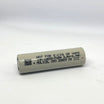In modern defense operations, drones have become as vital as boots on the ground. For the Indian Army, defence drones are now central to surveillance, reconnaissance, and tactical missions. These sophisticated machines operate in extreme conditions where even the smallest oversight can compromise the mission. This is why pre-flight checks are a mission-critical discipline.
At insideFPV, we understand that precision, reliability, and safety are non-negotiable when it comes to military drone operations. Whether deployed in high-altitude border areas or in dense forest surveillance, a well-executed pre-flight check can mean the difference between mission success and failure.
In this guide, we cover the essential pre-flight checks that every military drone operator in the Indian Army must master.
Why Pre-Flight Checks are Critical in Defence Operations
A drone in the defence sector is not just a piece of technology; it is a strategic asset. Unlike commercial drones, military drones often operate in hostile environments, face electronic warfare threats, and carry sensitive payloads. Any technical failure can lead to:
-
Loss of valuable reconnaissance data
-
Exposure of troop positions
-
Risk of the drone falling into enemy hands
-
Potential compromise of classified systems
A thorough pre-flight inspection ensures that the drone is fully mission-ready and capable of performing under challenging conditions.
Also read: insideFPV launches drone lab at Muni Seva Ashram in Vadodara
Pre-Flight Checks: The Essential Steps
Let us go through some of the important steps that you must keep in mind.
1. Mission Briefing and Environmental Assessment
Before touching the drone, the operator must have complete clarity on the mission objectives. This includes:
-
Understanding the mission route and target zones
-
Assessing weather conditions such as wind speed, temperature, and visibility
-
Reviewing GPS availability and potential signal interference risks
-
Studying terrain and potential obstacles in the flight path
For the Indian Army, this step is even more critical in border operations where GPS spoofing or jamming may occur.
2. Airframe and Structural Integrity Check
The airframe must be inspected for any signs of wear, cracks, or deformation. Defence drones often operate in rugged environments, so physical damage is common. Pay attention to:
-
Rotor blades or propellers for chips or imbalance
-
Arms and joints for structural stress marks
-
Fasteners and screws for tightness
-
Landing gear for stability
Any irregularity should be addressed before deployment.
Also read: Real time drone surveillance: What makes it mission critical
3. Power System and Battery Health
Battery failure mid-flight can be catastrophic. Operators should:
-
Verify battery charge levels for mission duration and reserve
-
Check for swelling, corrosion, or leakage in battery cells
-
Ensure secure battery placement and connectors
-
Confirm backup power systems are functional
For long-range defence drones, always carry spare battery units, especially in high-altitude or cold weather missions where battery efficiency can drop.
4. Sensor and Payload Calibration
In defence missions, the payload, whether it is a camera, thermal sensor, or weapons system, is as important as the drone itself. Operators must:
-
Calibrate cameras for accurate image capture
-
Test thermal or infrared sensors for responsiveness
-
Check gimbal stability and range of motion
-
Ensure that encrypted data transmission from the payload is functioning
Insidefpv defence drones are equipped with smart calibration protocols to reduce setup time while maintaining precision.
5. Communication and Control Link Verification
A stable connection between the drone and the ground control station is non-negotiable. The operator should:
-
Test the primary control link for signal strength and stability
-
Verify backup communication channels in case of jamming
-
Check antenna alignment and condition
-
Confirm secure encryption for all command signals
In high-threat environments, communication redundancy is essential to counteract electronic warfare attempts.
6. Navigation and GPS Reliability Check
Indian Army missions often take place in areas with compromised GPS access. Therefore:
-
Verify GPS lock and accuracy before take-off
-
Test inertial navigation systems for backup navigation
-
Pre-load mission waypoints into the drone’s system
-
Ensure geofencing limits are adjusted to mission parameters
7. Software and Firmware Status
Outdated or corrupted software can cause flight instability. Operators must:
-
Check for the latest approved firmware updates from secure defence channels
-
Verify mission-specific software configurations
-
Run diagnostics to detect any code errors or abnormal logs
-
Ensure cybersecurity protocols are active
Insidefpv’s military-grade drones integrate AI-assisted diagnostics to detect potential software anomalies before launch.
Also read: How insideFPV fits in India’s leading drone defence future
8. Flight Control Systems Test
Before deployment, conduct a short manual test to confirm:
-
Stability in hover mode
-
Smooth response to directional commands
-
Functioning obstacle detection systems
-
Accuracy of return-to-home functions
This is the final confidence check before engaging in the actual mission.
Special Considerations for Indian Army Deployments
The Indian Army often operates in diverse terrains, from the icy Siachen Glacier to the dense forests of the Northeast. Each region demands specific adaptations to pre-flight checks.
-
High Altitude Operations: Pay extra attention to battery efficiency, propeller balance, and motor performance in thin air.
-
Desert Operations: Check for sand intrusion in motors and sensor housings.
-
Maritime Surveillance: Ensure corrosion protection and water-resistant sealing.
Insidefpv designs its defence drones with these operational environments in mind, ensuring adaptability across India’s varied mission landscapes.
Frequently Asked Questions
Why are pre-flight checks more critical for defence drones than commercial drones?
Defence drones operate in hostile and high-risk environments where failure can compromise mission safety and national security. Pre-flight checks ensure reliability under these extreme conditions.
How often should Indian Army drone operators conduct pre-flight checks?
Checks should be performed before every mission, regardless of how recently the drone was used, to ensure all systems are mission-ready.
What happens if a drone fails one of the pre-flight checks?
If any system or component fails inspection, the drone should not be deployed until the issue is resolved to prevent operational risks.

